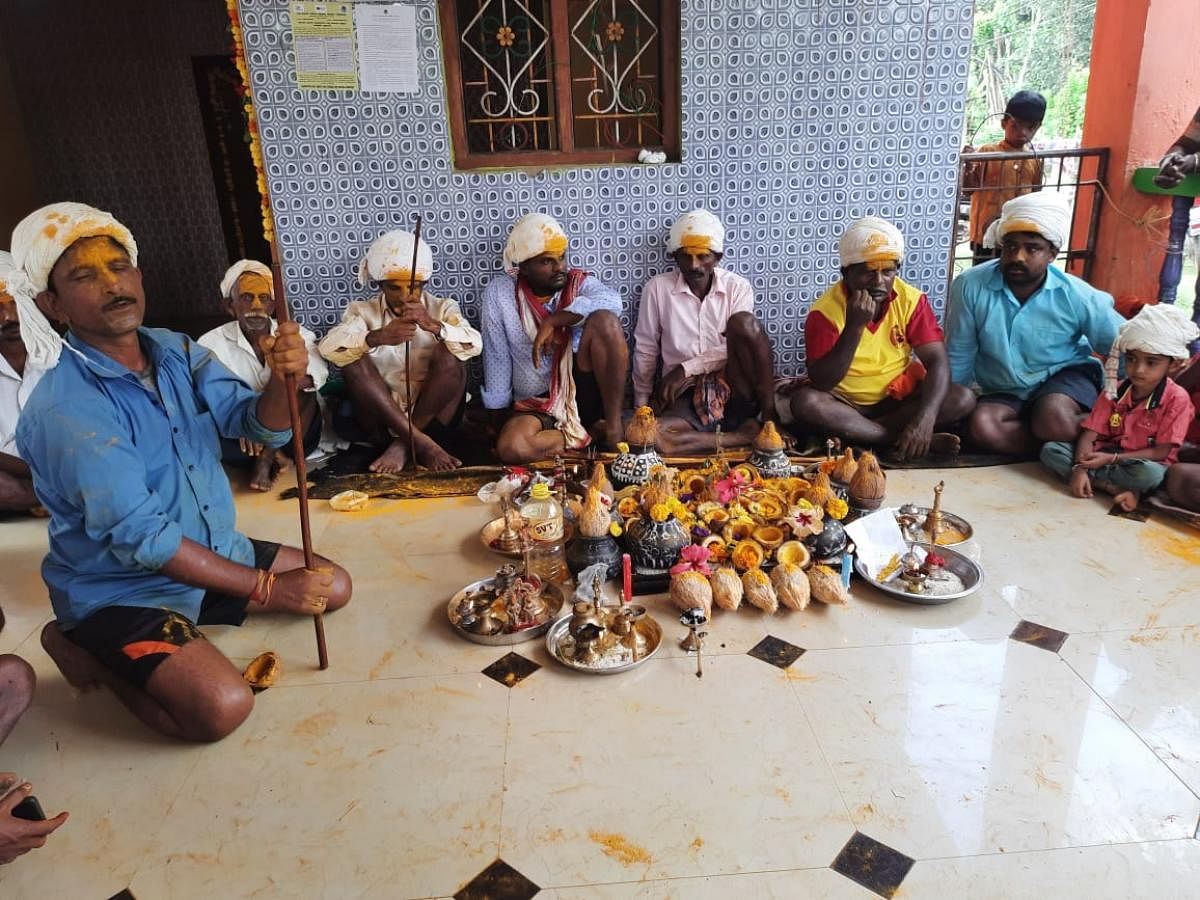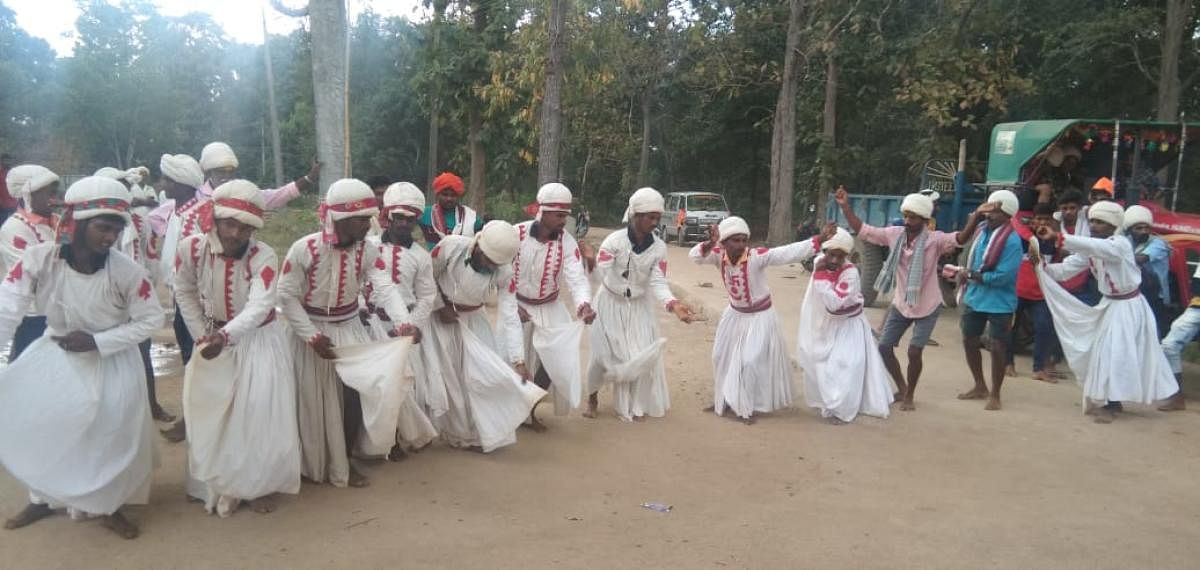

Picture this: Clad in white-coloured cloaks with red stripes and motifs, wearing anklets and a paagot (headgear), men from the Dhangar Gouli community dance to the beats of a dhol and a brass plate. Chants of ‘Chaang Bhala’ and ‘Hoi Gaja’ ring in the air.
This lively folk dance, called ‘Gajja’ (or Gaja) is performed by the men of the Dhangar Gouli community during festivals like Deepavali and Dasara. It is generally seen in gouliwadas (groups of huts of Gouli people) tucked inside the forest areas of Yellapur, Dandeli, Mundgod and other taluks of Uttara Kannada district.
Dasara and Deepavali are celebrated in a grand manner by the Gouli community, which has a pastoral-nomadic origin. It is said that the community mainly came from Maharashtra and Goa and settled in the fringes of Uttara Kannada’s forests around a century ago.
Till today, they have retained their own dialect which is a near-mix of Marathi and Konkani. They have also kept their traditions alive, their folk dances being a prime example.
The Goulis believe that performing Gajja during Deepavali wards off evil and ensures the well-being of the community.
“It is a group dance, with some handling the instruments and others engaging in simple, slow footwork with swaying movements like an elephant. This is why we use the word ‘Gaja’ (meaning elephant). It is almost mandatory for every man from the community to learn the dance from elders,” explains Bajju Koya Tate, a youth from Yellapur’s Bailandoor gouliwada.
On the Bali Padyami day of Deepavali, families clean, decorate and worship their cattle. They also organise a puja, ‘Hori Habba’ and the Gajja dance in their neighbourhoods.
Mass festival
Apart from this, many Goulis attend the ‘Shillangan’, a mass festival organised in a few villages. “Shillangan is organised during both Dasara and Deepavali, by those who want to fulfil their vows. It is dedicated to Lord Vithoba and other clan deities. The members of ‘Edage’ families perform the rituals and crowds gathered during the festival pray for the prosperity of their cattle,” says Gangadhar Lamani, a teacher who has researched the Goulis.
“Gajja is mostly performed during festivals in every hutment, and the number of performers is based on the number of people in the hutment. But in some hutments, we have ‘Chalti Shillangan’ where Gajja is performed every night for around two to three hours right from Ganesh Chaturthi to Deepavali. During Shillangan, the Gajja group grows larger,” says Vittu Bajari of Alkeri gouliwada.
Two days before the Shillangan, the organisers offer eeda (betel leaves and nuts) and formally invite people from other gouliwadas to attend the fest. “The day before the Shillangan, people come to the host’s gouliwada with coconut and turmeric. The men perform Gajja all through the night,” adds Bajju.
The next morning, they set up a ‘ghada’ (a ghatta or kalash) inside a mantap made of natural materials. A huge pot is kept for guests to offer buttermilk. This is later used to prepare ‘khadi’, a buttermilk-based curry. This is served to guests, along with sweets made with ghee, jaggery and rice cooked in milk.
“Milk and milk products are an integral part of our celebrations. In fact, they are the identity of our community because we are cowherds and shepherds,” says Bhagi Bagu Bicchukle, a Gouli woman.
In the evening, the crowd moves towards a banni plant (called ‘son’ in their dialect). A village elder cuts some leaves and offers it in prayer for the protection of their children and the cattle. Later, it is believed that one among the crowd gets possessed by a spirit and predicts the prospects of the year, including rain.
Another fun element of the celebrations is the ‘Shaapot’. “Here, a man lies down and other men from the community try to lift him upright only using their strength (only shoulders) amid the beats of the dhol. It is a show of their strength and is enjoyed by the audience,” says Sonu Jankar, a Gouli community member.